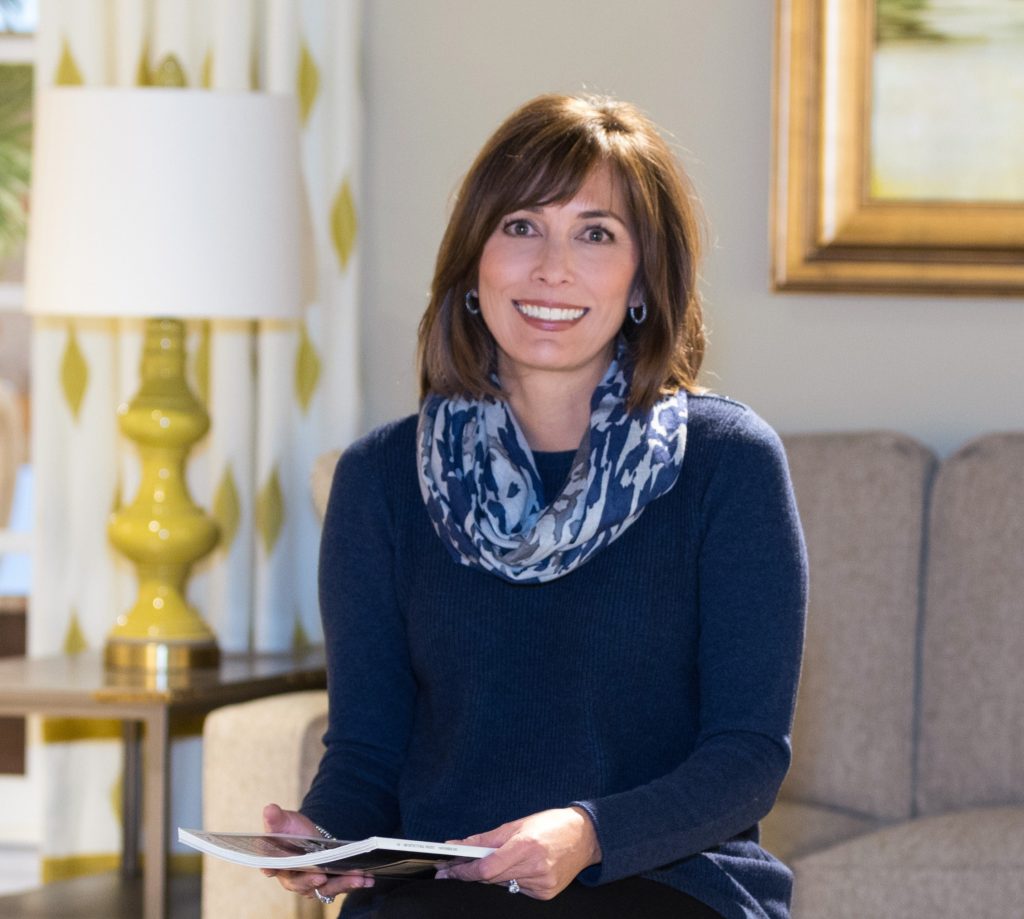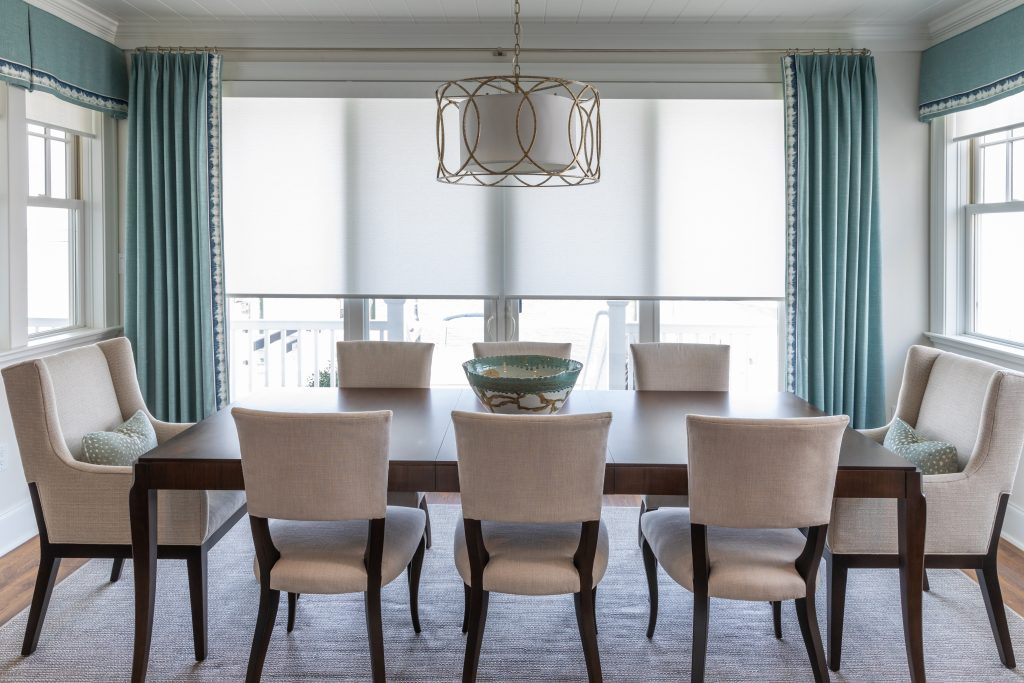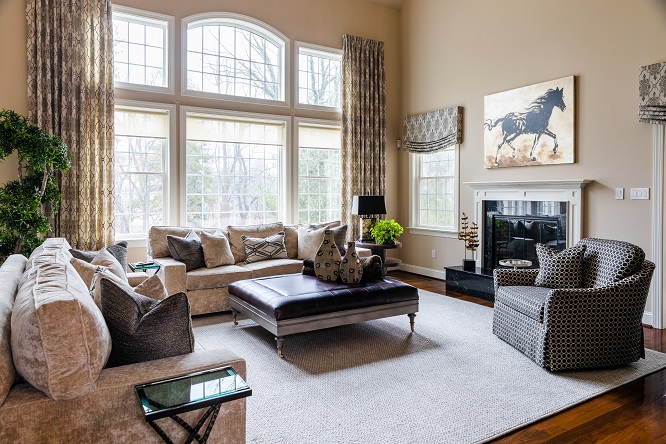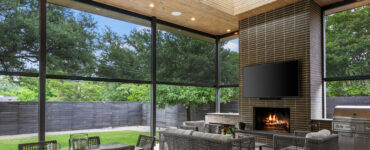
Lori Yanez with Sheffield Furniture & Interiors in Phoenixville, Pennsylvania, began her career in 1993. She felt it was important to develop a specialty in a specific area of design, so when it came time to choose, she decided to focus on window treatments. “Obviously specifying window treatments and window coverings are a big part of being an interior designer,” she says. Since her company has a custom window treatment workroom in-house, it was easy for her to learn from its experts.
Since becoming a window treatment specialist four years ago, she’s gone on to create some incredible designs—several of which caught our judges’ eyes at this year’s VISION Design & Workroom Competition Awards. In addition to winning awards in two categories, she was named Designer of the Year.
We chatted with Yanez about how she got interested in window treatments, how designers can form a seamless partnership with workrooms and what window covering trends she sees right now.
How did you feel when you found out you’d been named Designer of the Year?
I was speechless and overwhelmed. I was so excited to hear the news and incredibly honored to be named Designer of the Year.

You’ve obviously put a lot of time and effort into learning about what makes a beautiful, functional window covering. What made you interested in focusing on window treatments as an interior designer?
Window treatments are the jewelry for the room, the finishing touch, but many designers overlook them or don’t give as much weight to them. It’s a specialized field. It can be confusing to know how window treatments work, how to design them and how to achieve a beautiful end result.
At Sheffield, we design and fabricate many window treatments and custom soft goods, and because of the nature and the complexity of the jobs, we have a position of window treatment specialist at the company. I wanted to specialize in something, so it made sense for me to take that position. I’m really passionate about what I do. Being detail oriented is very important when you’re creating window treatments.
A lot of designers feel overwhelmed and intimidated by window treatments. How can they learn more about specifying and designing them?
It’s helpful if you have a mentor or a workroom you can work with. Or you can partner with a designer who’s been in the field for years so you can learn a lot of the ins and outs of the window covering business. Experience is the most important thing because you will come across so many things and so many different scenarios when working in homes. You’ll gain the most knowledge through hands-on experience.
I am open to working with the fabricators in the workroom. I photograph all of my work so I can revist what went well in each scenario and what could have gone better. The workroom and I discuss what fabrics are great performers, and we keep a list of fabrics that may have created issues in the past. Since we fabricate in-house, I can visit the workroom and check on the progress of the project, talk to the fabricators and make changes if needed.
I think ongoing education is very important. Anytime there is an opportunity for me to learn something, I sign up for it. That might mean attending shows like the International Window Coverings Expo so I can learn about what is happening in the window covering world, or attending the latest seminars Hunter Douglas and other companies might provide. The industry changes quickly and it is important to be abreast of the latest trends. Technology is changing faster than most of us can keep up with!

Can you share some tips for how to best work with workrooms?
With window treatments, you can never be specific enough. When you’re measuring for a window treatment, measure and check yourself two or three times. Take photos of all of your windows so you can reference them with your workroom.
You want to be extremely detailed about what you’re designing so you can communicate effectively to your workroom. We even use specific forms so we can be sure our information is communicated correctly and read correctly.
It’s also important that you know the terms your workroom uses. For example, some workrooms might call a top-tack pleat a Parisian pleat. You want to make sure that whoever you’re working with, you’re using the same vocabulary.
What are some of the trends you’re seeing in window treatments?
I’ve seen a huge increase in motorization and smart homes in the last few years because people want to be able to control their shading products with their phones and tablets.
Draperies are still very popular. Today’s clients prefer tailored panels as opposed to the overdone valances and draperies that were popular 15 years ago. Hardware is smaller in scale, with new finishes that pair nicely with the painted and metallic finishes we are seeing in the furniture world. Finials are more transitional. Trims on the vertical edge of panels provide a fresh look without committing to a print that may be tiresome over time. Geometrics and embroideries are also frequently requested.


